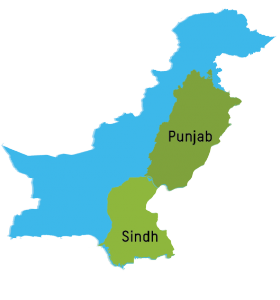Rural Hub Pakistan
Rural Hub Pakistan
Facts and Figures
Most young people in rural areas are caught up in a cycle of poverty. There are not enough employment opportunities for economic development. These are the most important barriers:
 131.9 million people are under 30 years, that is 64% of population of the total population
131.9 million people are under 30 years, that is 64% of population of the total population- 4 million people enter the workforce every year
- 60% are having unstable or low paid jobs
- 35% are having unpaid jobs
- 60% of young people live in rural areas and 40% are unemployed
- Rural youngsters have limited level to good and high level education
- Skills do not match the needs of the labour market
- They come from disaster-prone communities
- Rural youngsters are often denied basic social rights
- High level of child marriage
- Gender-based violence is common and accepted
- No safe transport and mobility
- Social and cultural norms restrict women to domestic responsibilities
- Little knowledge about climate change
“At home it's tough. Lot of times my elder brothers have arguments. About money, land... At one point they stopped me from going to school. We had little to no money at that time, so I didn't argue too much. But my father saw how unhappy I was and agreed to let me go to university. The fee was more than half his salary. My brothers were very unhappy with me. 'What was the point of studying?' they asked me if my only ambition in life can be to get married and have children.” Anila Paras, 19-years old.
Topics for solutions
To make the rural Hubs successful and sustainable for young people is a complex challenge. The Hubs need to become youth-friendly, provide tools to create job opportunities, and become a community space. E-Motive therefore looks into solutions for four broad topics.
- Safe mentoring & peer learning models
- Safe mobility
- Job creation tools
- Community space creation
